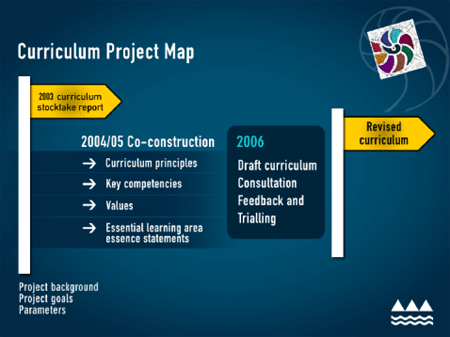Prior to the comprehensive revision of the whole school curriculum in the 1990s, the curriculum was specified through more than a dozen syllabuses and guidelines. These were provided for subjects and in some cases aspects of subjects, such as handwriting. The documents were of different vintages (spanning 1961–1986), covered different year levels (forms 1–4, junior classes to form 2, and so on), and were written in different forms.
Following a public consultation on the curriculum in the mid 1980s (the Curriculum Review), the Department of Education began work on an overall framework for a revised school curriculum. However, the work did not proceed beyond a draft document (published 1988 as National Curriculum Statement: A Discussion Document for Primary and Secondary Schools [Draft]).
The reform of the administration of education in 1989 and the a change of government in 1990 sidelined the project.
Curriculum development resumed in 1991, at first under the Achievement Initiative policy and from 1993 under the umbrella of The New Zealand Curriculum Framework (Ministry of Education, 1993).
The total revision of the New Zealand school curriculum began in 1991 in both English and Māori.
New National Curriculum Statements progressively replaced old syllabuses from 1992. They were published initially in draft form for consultation and trialling, then published in final form, and gazetted for mandatory implementation in years 1–10.
In 1996 the development and implementation of new statements was paused in response to widespread concern across the school sector about the pace and scale of change. New timelines for the curriculum were announced in July 1997 introducing a transition period of at least two years between the publication of a final statement and its mandatory application.

